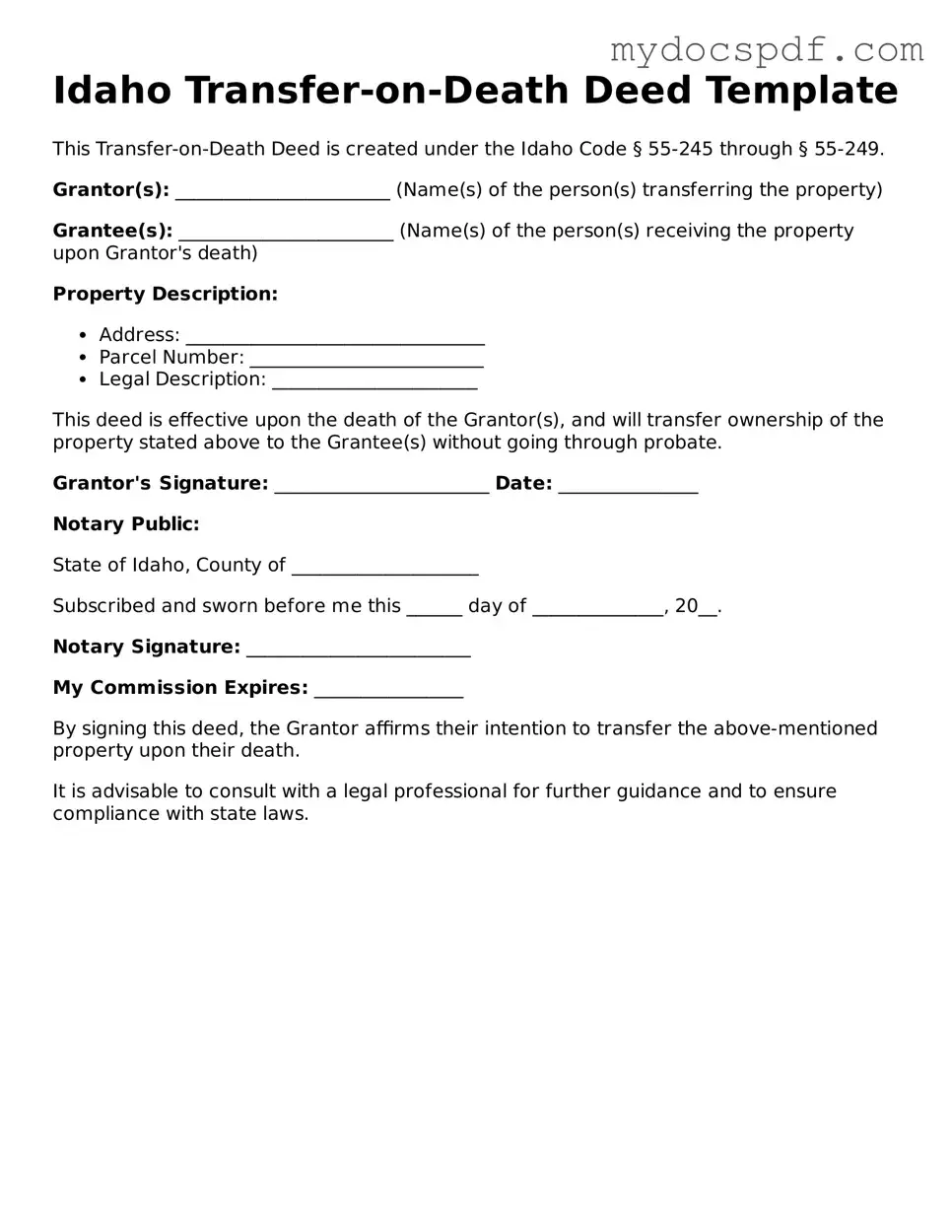Idaho Transfer-on-Death Deed Template
This Transfer-on-Death Deed is created under the Idaho Code § 55-245 through § 55-249.
Grantor(s): _______________________ (Name(s) of the person(s) transferring the property)
Grantee(s): _______________________ (Name(s) of the person(s) receiving the property upon Grantor's death)
Property Description:
- Address: ________________________________
- Parcel Number: _________________________
- Legal Description: ______________________
This deed is effective upon the death of the Grantor(s), and will transfer ownership of the property stated above to the Grantee(s) without going through probate.
Grantor's Signature: _______________________ Date: _______________
Notary Public:
State of Idaho, County of ____________________
Subscribed and sworn before me this ______ day of ______________, 20__.
Notary Signature: ________________________
My Commission Expires: ________________
By signing this deed, the Grantor affirms their intention to transfer the above-mentioned property upon their death.
It is advisable to consult with a legal professional for further guidance and to ensure compliance with state laws.
